No products in the cart.
Table of Contents
One way to make an empty yard appealing is to plant a ground cover. Ajuga reptans is one species that fit this purpose. The word reptans is a Latin word that means creeping, which pretty much describes the growing habit of this herbaceous flowering plant outdoors.
Ajuga reptans can easily spread and cover the ground with their mat-forming carpet.
More About Ajuga reptans Plant
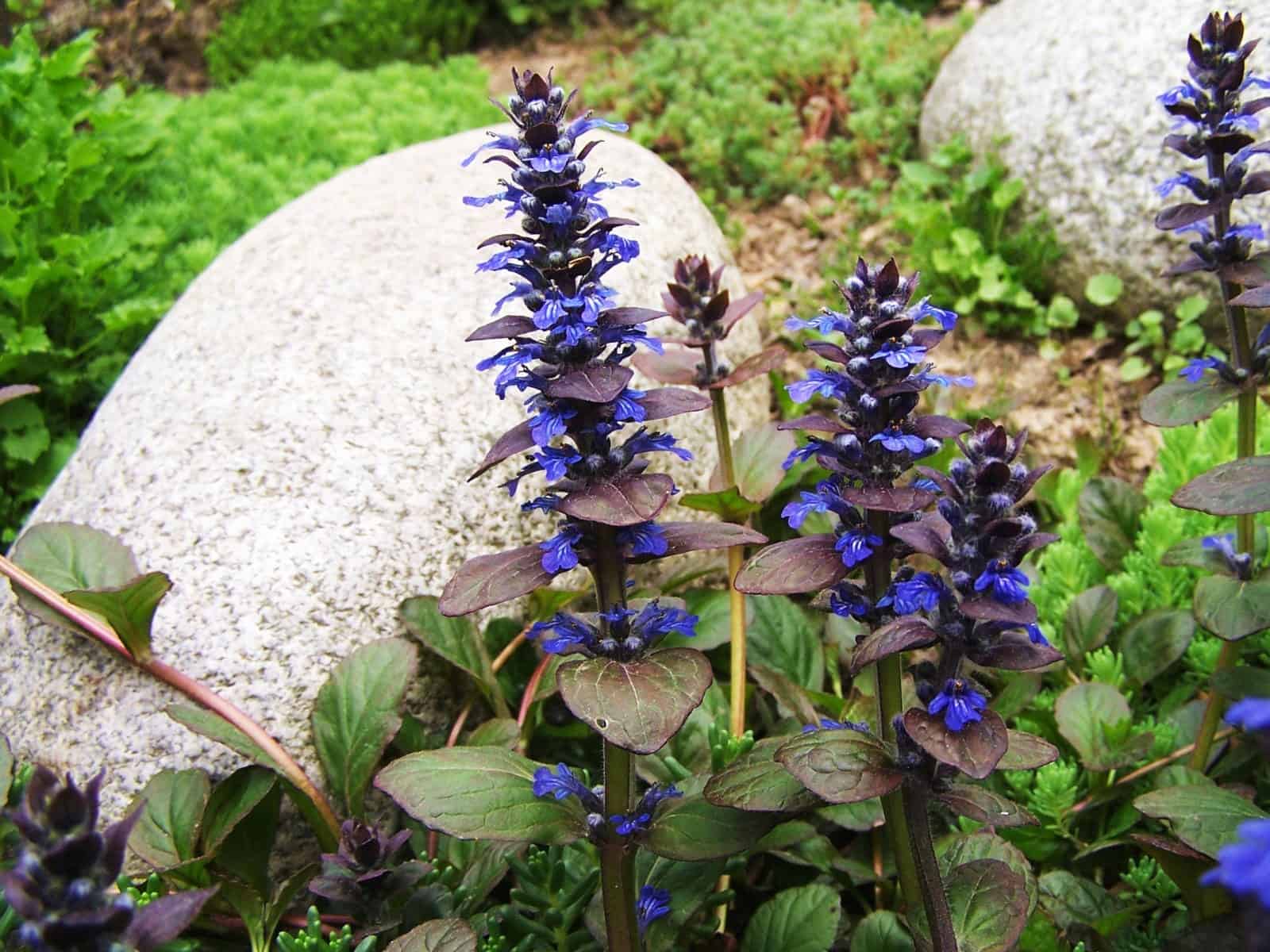
The genus Ajuga is a member of the Lamiaceae or Mint family. Ajuga reptans is a perennial species under this genus that’s popular for its shiny, dark green but bronze-tinged leaves and purple flowers. It’s native to Europe, northern Africa, and southwestern Asia.
Other familiar names include blue bugle, carpet bugleweed, carpet bugle, or carpetweed.
The flower spikes start to appear from mid to late spring. When mass planted, it creates a dense mat ground cover, leading to a striking display of their blue-violet flowers. It will make any landscape attractive with its unique foliage color and pretty flowers.
Because of its quick growth and extensive root system, carpet bugleweed is also suitable for erosion control to prevent soil loss. You can establish ajuga plants in shady locations like lawns, naturalized areas, slopes/banks, rock gardens, or woodland.
This plant is also rabbit and deer-resistant. It can also withstand foot traffic, making it excellent for filling bare ground.
Bugleherb Plant Care Guide
Another good thing about Ajuga plants is that they’re very easy to grow, care for and maintain. It’s considered one of the invasive species in some areas, so you need to manage them well. It grows in USDA hardiness zones 3a to 10b.
Here are some things to remember about Ajuga reptans buggleherb plant care.
Soil
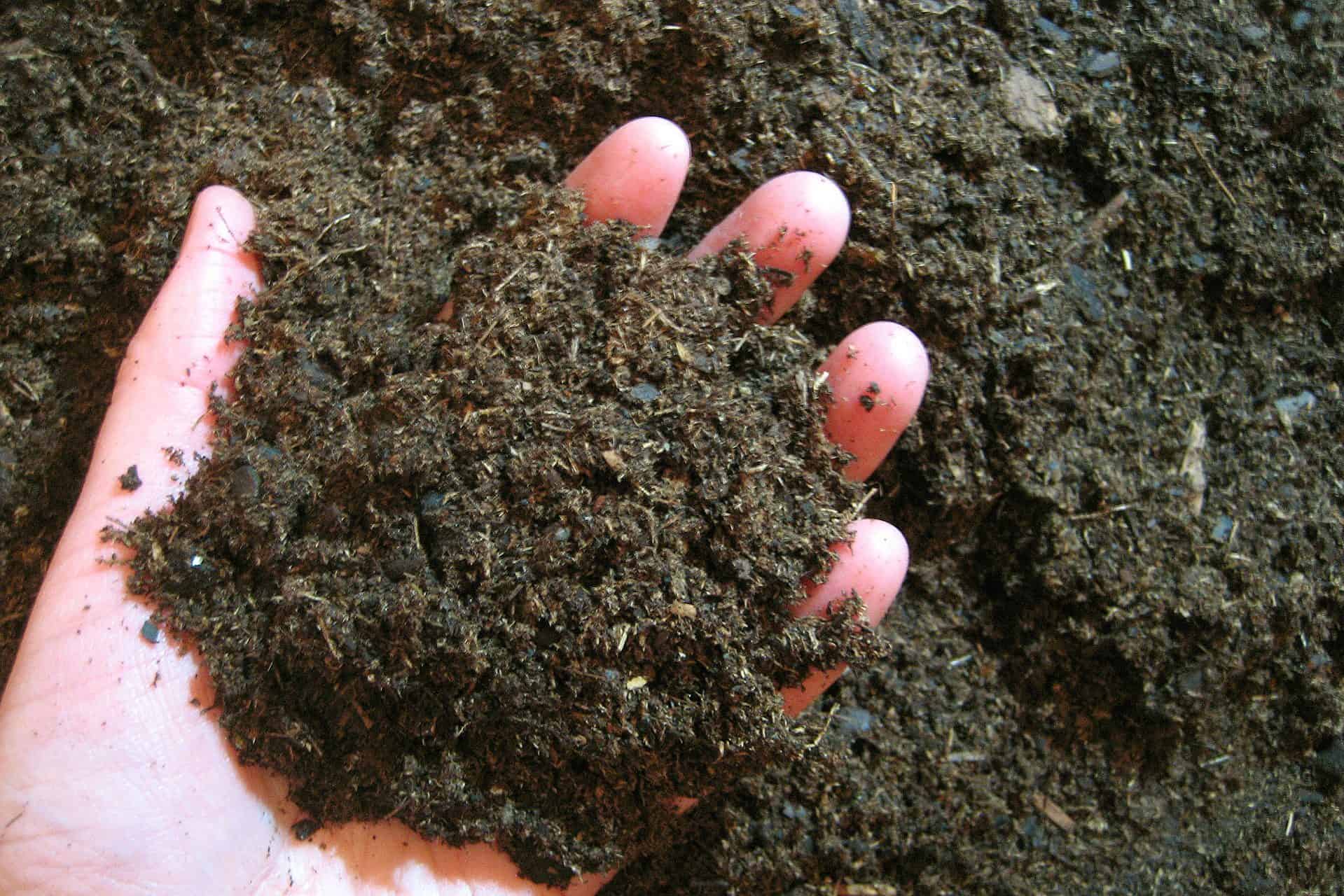
A moist soil with good drainage works well with Ajuga reptans. If you have soil that’s a humus type, that would be perfect for growing this plant. Please keep away from heavy soils as they have little drainage. Slightly alkaline or acidic soils are suitable.
Light
The preferred light condition of the carpet bugleweed ranges from full sun to part shade. Exposure to plenty of light helps amplify the bronze beauty of the foliage. It also helps the plants produce profuse flowers.

Carpet bugleweed may also tolerate full shade, but it’s not ideal because it affects foliage color.
Water
A medium amount of water is good for growing healthy Ajuga plants. Once established, it has moderate tolerance to drought. It will thrive in a location that receives normal rainfall.
For newly planted Ajuga reptans, provide an inch or two of water every week. It prefers that you leave the soil moist. Doing this will help the plants indoors develop an extensive root system.
Fertilizer
Carpetweed rarely needs fertilizer. They grow pretty well, even without regular fertilization. However, if you’re growing it in poor soil, you may need to supplement nutrients. You can use an all-purpose granular fertilizer.

For easier application, choose a water-soluble fertilizer. Dilute it according to instructions before using them on your Ajuga plants.
Humidity and Temperature
The blue bugle carpetweed is tolerant of both hot and cold temperatures. However, temperatures below zero degrees will be stressful enough to cause damage to the bronze-tinged leaves.
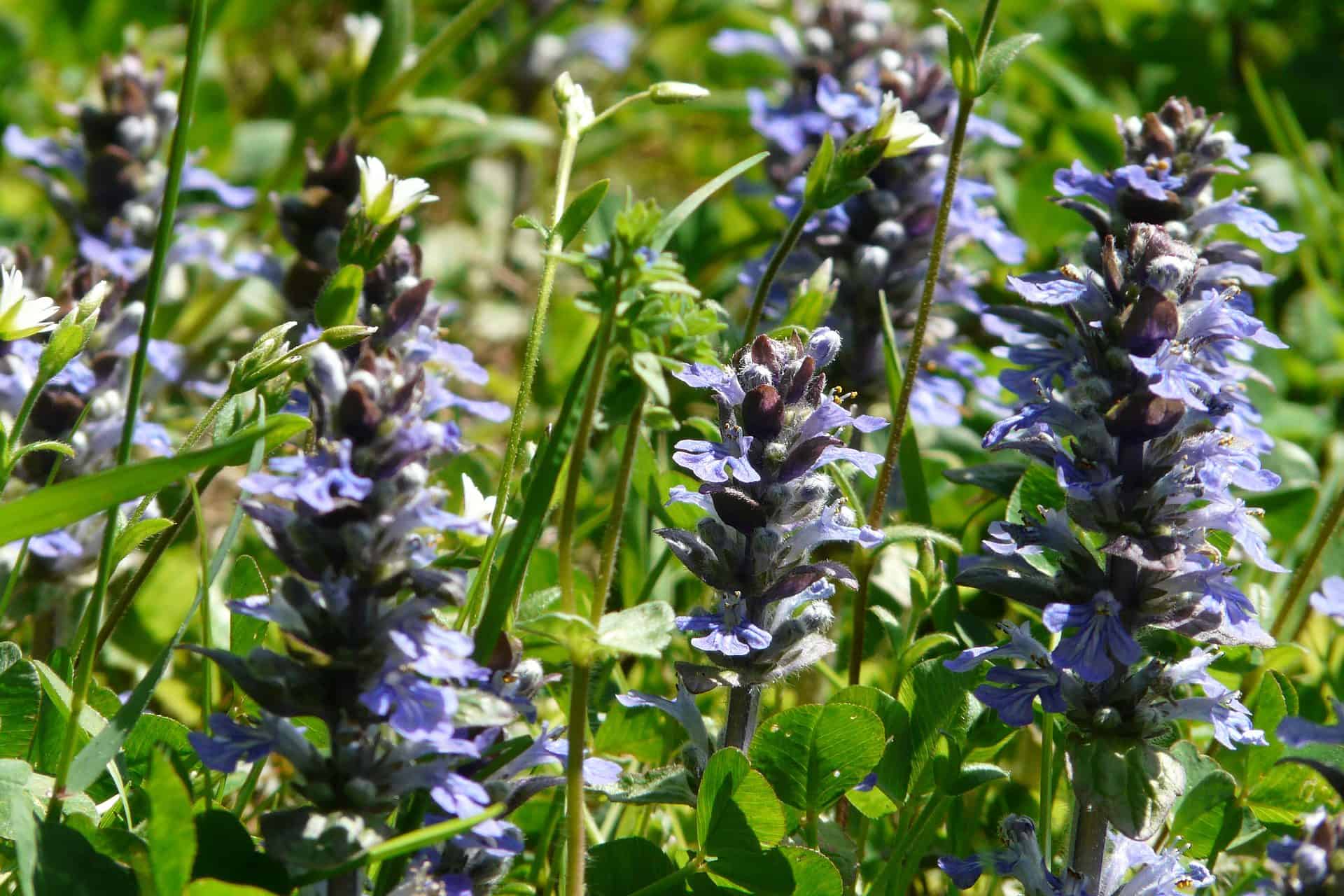
Highly humid areas are good for growing Ajuga reptans. Just make sure the place has good air circulation, so moisture isn’t trapped, preventing the occurrence of diseases.
Propagation
You can propagate a blue bugle in two ways. One is through division, and the other one is through seed. If you have existing blue bugle plants that start getting overcrowded, you can divide the clumps and plant them separately.
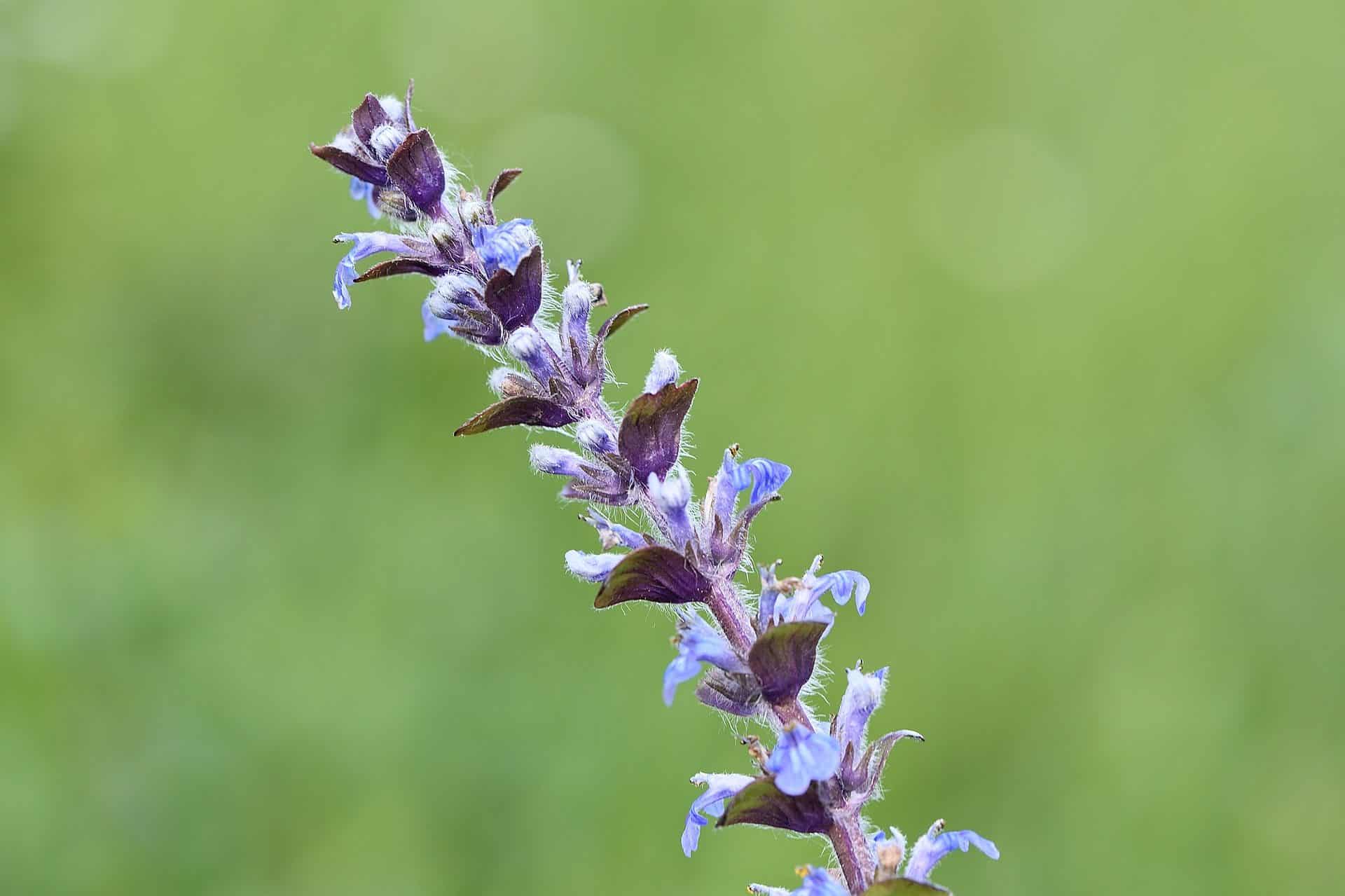
Locate the mother plant and dig it up. You’ll notice that it has surrounding offshoot plants. Cut them off and plant the individual shoots in another location where you want to establish a carpetweed.
If using seeds, you’ll have to start them indoors during the early springtime. Cover with a thin layer of compost and keep it moist. Wait for the seedlings to grow and become vigorous before transplanting them into the garden beds.
Pruning
One pruning technique is to cut back after blooming once the purple flowers have faded. Deadheading helps prevent the spreading of the seeds in undesired areas. It also helps improve the quality of the foliage.
Pruning the runners twice a year is another way to keep the plant’s growth under control. You can use a lawnmower to execute this.
Ajuga reptans Similiar Plants and Varieties
A. reptans ‘Black Scallop’
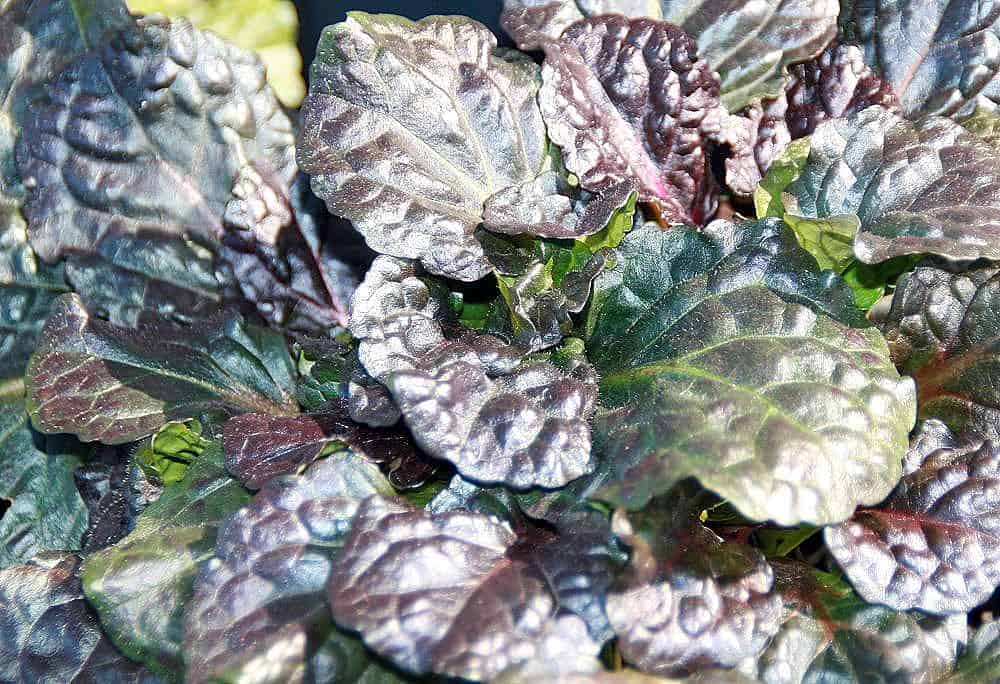
The Black scallop is a variety of Ajuga reptans that has a dark, almost black foliage color. The flowers, on the other hand, are deep blue in color.
A. reptans ‘Burgundy Glow’

Burgundy glow is known for its variegated leaves that are tri-color. It’s a combination of creamy white, deep-rose, and green.
A. reptans ‘Atropurpureum’
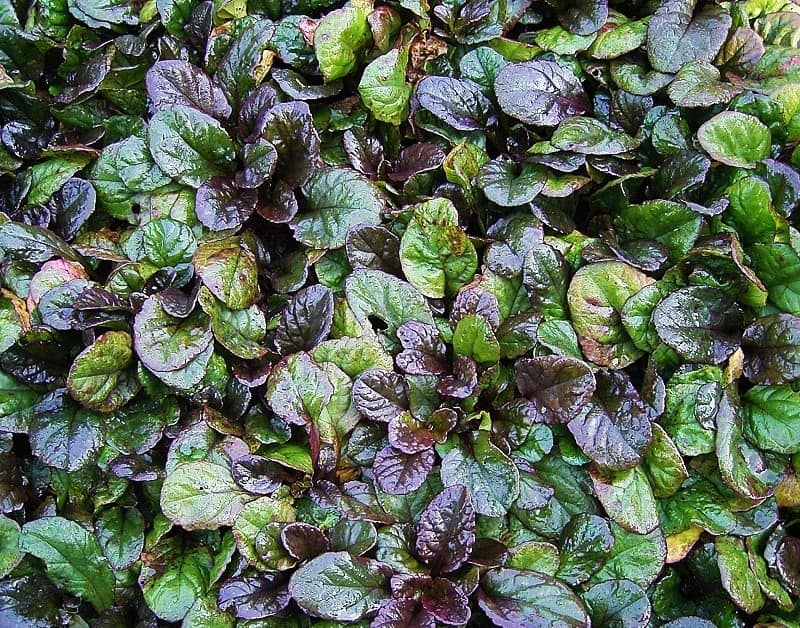
The Atropurpureum variety has bronze beauty combined with a purple tinge.
Ajuga reptans Diseases and Pests
Crown rot is the most prevalent disease of Ajuga reptans. This happens when the plants are grown in humid and wet areas where moisture is trapped. Remember that this plant requires good air circulation for better health.
To prevent crown rot, ensure that the soil is well-draining and that the plants are not overcrowded in one place.
Frequently Asked Questions
Yes, you can plant ajuga from spring to early fall. Provide enough spacing in between, around 12 to 15 inches.
Yes, the young shoots are edible. You can use them on salads, teas, and casseroles.
Since it comes from the Mint family, bugleweed has that mint scent. When eaten, it has a slightly bitter taste.
Some studies revealed that bugleweed has active ingredients that have analgesic, antidiarrheal, antimicrobial, antioxidant, antiparasitic, anti-inflammatory, and dermatological properties.
Yes, bugleweeds are dog-safe.
Bugleweed herb is available on Amazon or here at Plantly. You can even visit your local nursery or garden center to check out for them.
Whether you want to buy, sell or simply reach out to other plant enthusiasts, Plantly is the right place to be!


